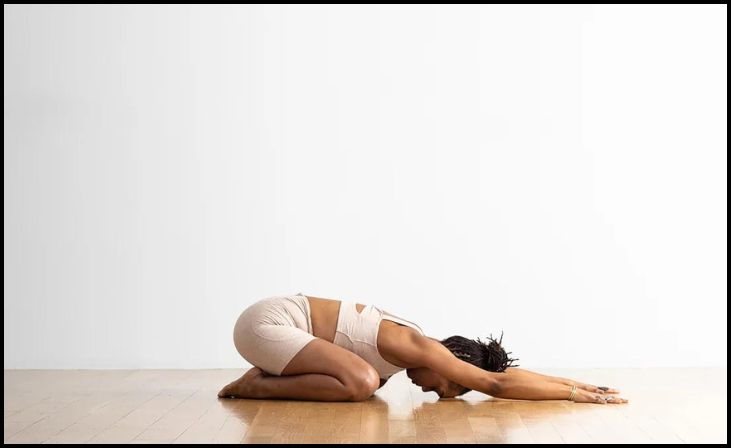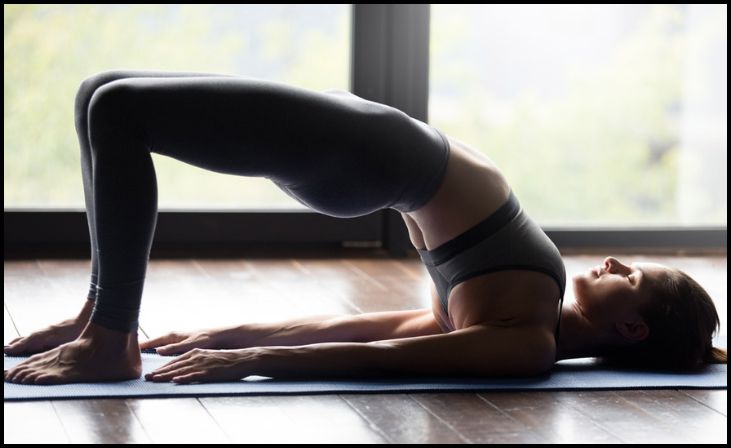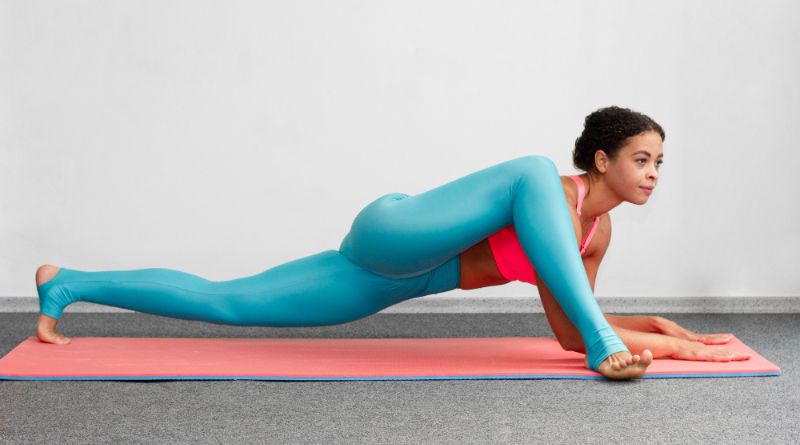Lower back pain is a common ailment affecting millions worldwide. Whether due to sedentary lifestyles, poor posture, or strenuous activities, discomfort in this area can greatly diminish quality of life. Fortunately, yoga offers a holistic approach to alleviate lower back issues by targeting flexibility, strength, and relaxation. In this guide, we’ll explore eight ideal yoga stretches specifically designed to ease lower back tension and promote overall well-being.
Child’s Pose (Balasana):

Begin by kneeling on the mat, toes together, and knees apart. Lower your torso between your thighs and extend your arms forward, palms down. Rest your forehead on the mat and breathe deeply, allowing your lower back to relax. Child’s Pose gently stretches the spine, hips, and thighs, offering relief to the lower back muscles.
Cat-Cow Stretch (Marjaryasana-Bitilasana):
Start on your hands and knees in a tabletop position. Inhale as you arch your back, dropping your belly towards the floor and lifting your gaze towards the ceiling (Cow Pose). Exhale as you round your spine, tucking your chin to your chest (Cat Pose). Flow smoothly between these two positions, syncing movement with breath to massage the spine and release tension in the lower back.
Downward Facing Dog (Adho Mukha Svanasana):
From a plank position, lift your hips towards the ceiling, straightening your arms and legs to form an inverted V shape. Press your palms into the mat and ground your heels towards the floor. Downward Dog lengthens the spine, stretches the hamstrings, and relieves compression in the lower back, making it an excellent pose for alleviating discomfort.
Forward Fold (Uttanasana):
Stand with your feet hip-width apart, hinge at the hips, and fold forward, bringing your chest towards your thighs. You can bend your knees slightly if needed to maintain a straight spine. Allow your head and neck to relax, and hold onto your elbows if you wish. Forward Fold stretches the entire back body, including the lower back, hamstrings, and calves, promoting flexibility and release.
Sphinx Pose (Salamba Bhujangasana):

Lie on your belly with your legs extended behind you and elbows directly under your shoulders. Press your forearms into the mat and lift your chest, drawing your shoulder blades down your back. Keep your gaze forward and lengthen through the crown of your head. Sphinx Pose gently opens the front body while strengthening the lower back muscles, reducing stiffness and discomfort.
Thread the Needle Pose (Parsva Balasana):
Begin on your hands and knees in a tabletop position. Slide your right arm under your left arm, threading it through until your right shoulder and temple rest on the mat. Extend your left arm forward or wrap it around your back, finding a comfortable stretch in your upper back and shoulders. Hold for a few breaths, then switch sides. Thread the Needle releases tension in the spine and hips, offering relief to the lower back.
Supine Twist (Supta Matsyendrasana):
Lie on your back with your knees bent and feet flat on the mat. Extend your arms out to the sides in line with your shoulders. Drop your knees to the right, keeping them stacked, and turn your gaze to the left. Keep both shoulders grounded as you breathe deeply into the twist. After a few breaths, switch sides. Supine Twist stretches the spine, hips, and shoulders, while also aiding digestion and detoxification.
Bridge Pose (Setu Bandhasana):

Lie on your back with your knees bent and feet hip-width apart. Press into your feet as you lift your hips towards the ceiling, engaging your glutes and thighs. Clasp your hands under your back and roll your shoulders underneath you. Hold for a few breaths, then slowly release back down to the mat. Bridge Pose strengthens the lower back, glutes, and legs, while also improving spine flexibility.
Conclusion:
Incorporating these eight ideal yoga stretches into your daily routine can provide significant relief from lower back pain and stiffness. Remember to listen to your body, breathe deeply, and move mindfully through each pose. With consistent practice, you can cultivate greater flexibility, strength, and balance, supporting your overall well-being and vitality.






